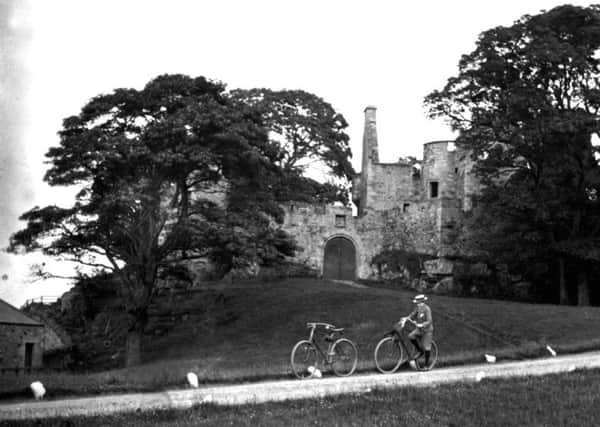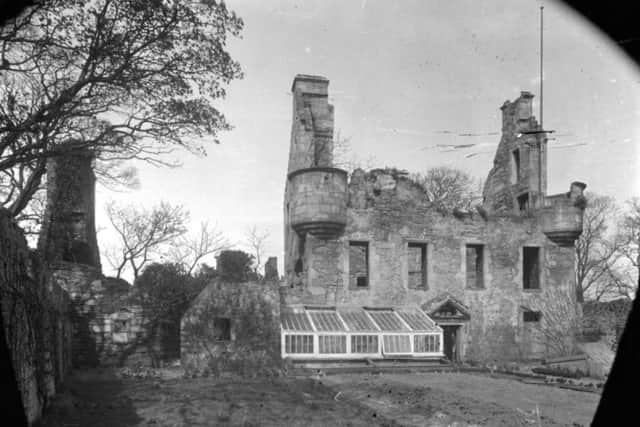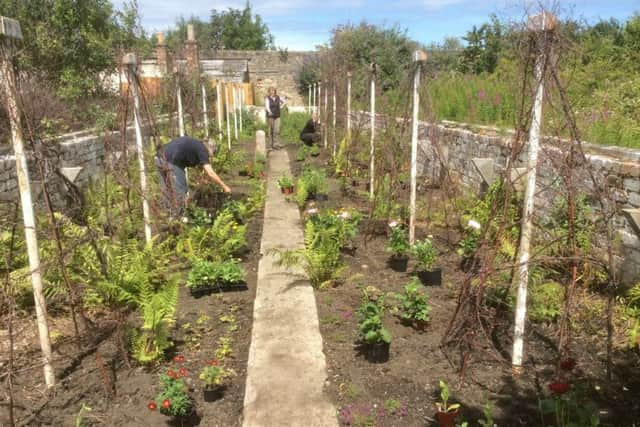The discovery of Edinburgh's lost secret garden


First planted more than 500 years ago, new life is unfurling a the Granton Castle Walled Garden once again thanks to a group of keen horticulturists who are determined to revive and protect the ancient space.
Remnants of the distant past can be found here among the tangle of saplings, bramble and scrub at the historic plot.


Advertisement
Hide AdAdvertisement
Hide AdOld rose and dames violet bloom among the weeds and a black grape vine still hangs in a crumbling glass house - and indeed may well bear fruit once again.
At work have been the Friends of Granton Castle Walled Garden who have both researched and cleared the site which was first built when the area was largely separated from Edinburgh by farmland.
Today, the plot is encircled by industrial works and office space but offers a sanctuary not only for local people but for wildlife, nesting birds - and a visiting tawny owl.


“You can really feel the atmosphere here,” said Kirsty Sutherland, chairwoman of the group.
Advertisement
Hide AdAdvertisement
Hide Ad“It’s really different to anywhere else in Pilton or Granton.
“Some people who came to our recent open day have lived in the area all of their life, but didn’t know it was here or what it was.
“For some people it is a very special place. It feels very secluded, very peaceful. The only time you know you are in a city is when the easyJet planes fly over head.”


The garden may be one of only three medieval walled gardens left in Scotland - the other two being found at Cawdor Castle near Nairn.
Advertisement
Hide AdAdvertisement
Hide AdHistoric Environment Scotland has granted Granton Castle Walled Garden B listed status, such has been the impact of the volunteers in reviving interest in the space.
Early records detail how the tower house at Granton was first occupied from 1479 by Melville of Carnbee whose family was gifted the lands by Robert the Bruce.
The creation of the walled garden as it stands today came under the ownership of Sir Thomas Hope of Craighall, a Lord Advocate who served under the reign of Charles I.


The outline of the garden has remained the same since the 1670s with walled gardens once a common feature of the large houses of Scotland to protect growth from weather and intruders - both animal and human.
Advertisement
Hide AdAdvertisement
Hide AdThe walls, which enclose mostly orchards at Granton, also served to create a microclimate for growing and prevent pollution.
From a gardener’s point of view, it is the “black gold soil” developed over hundreds of years that stands out for Ms Sutherland.
“We oo’ed and aah’d over the soil for a long time. It has developed over years and years of cultivation and back digging.
“It is totally unpolluted which is incredible given the surrounding industrial sites. This walled garden is like a little pristine island among them all.”
Advertisement
Hide AdAdvertisement
Hide AdThe original vine house dates back to the 1800s when then owner Duke of Buccleuch employed revered gardener and viticulturist John Thomson to transform the garden into a lush Mediterranean fruit basket
Thomson succeeded and, despite the climate, managed to grow scented muscat grapes with other varieties named after the Buccleuch family.
Granton Castle, which had crumbled over many decades of abandonment, was demolished in the 1928 with the stone underneath it quarried.
But the wall garden remained useful and was run by market gardeners for many decades.
Advertisement
Hide AdAdvertisement
Hide AdDuring WWII, it provided food for the local population. It’s last owner was John Smith retired around 10 years ago with the space largely left to nature’s course.
EDI Group had been due to develop the site with housing but, following local opposition, the company withdrew their application last January.
The Friends Group, who were given keys to the site earlier this year, will be able to remain at the walled garden if they can present a viable business plan for its future.
Ms Sutherland said: “EDI have been supportive to what we want to do - and there is so much we want to do.”
Advertisement
Hide AdAdvertisement
Hide AdIts return to a community market garden and orchard is being considered. A therapeutic herbal garden is also appealing.
“We want the people who live here to know there is something very special for them just down the road. The garden is like a treasure that keeps being uncovered.”
